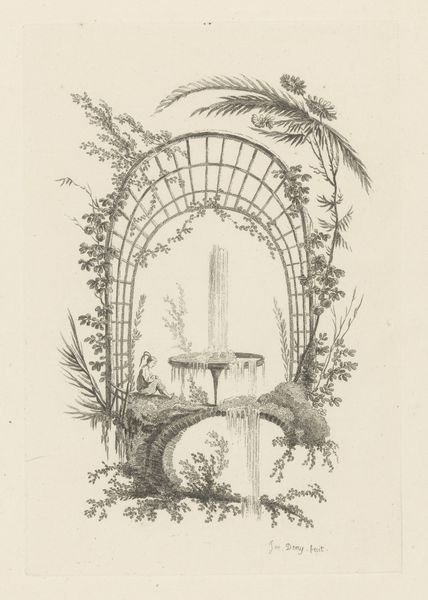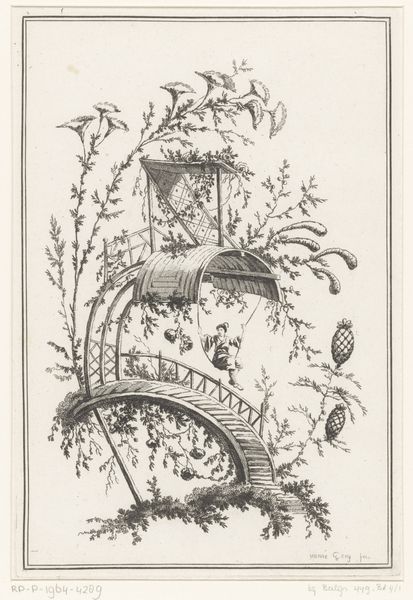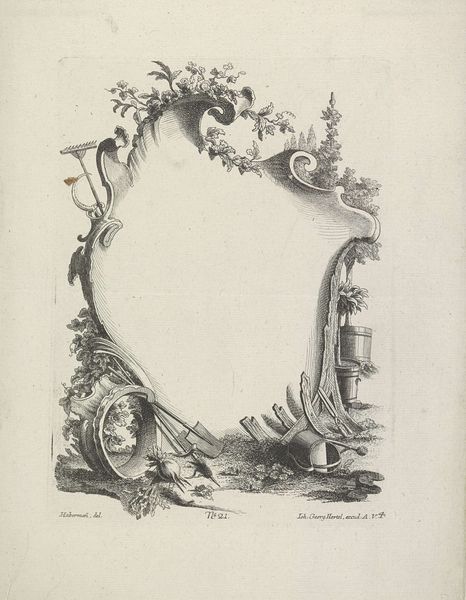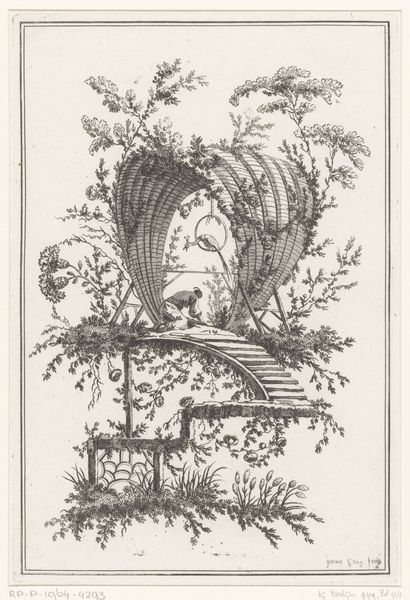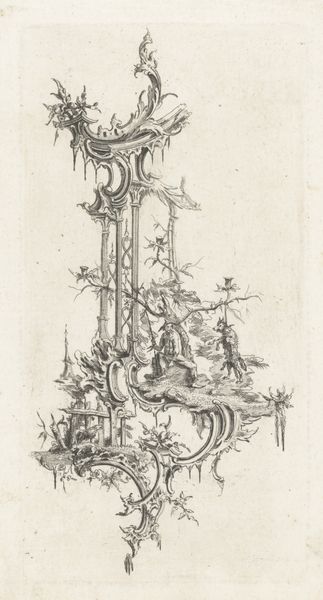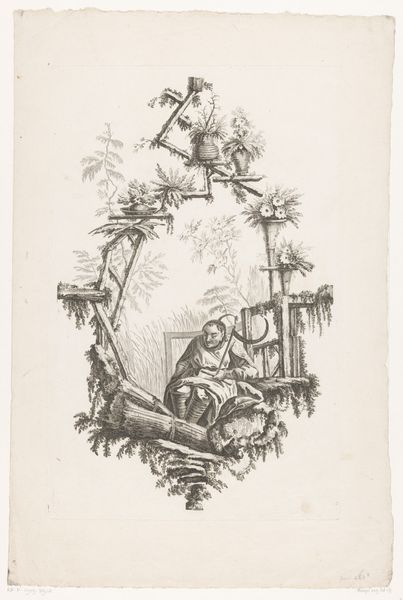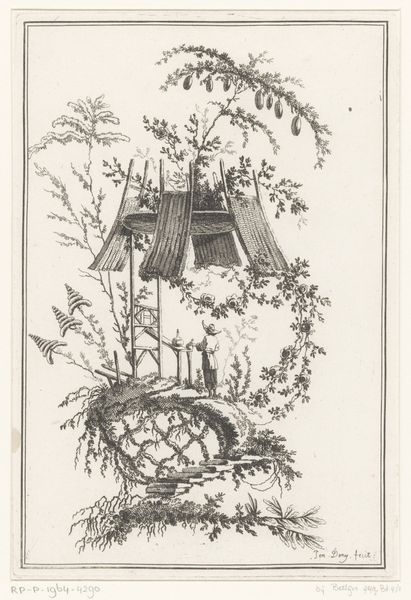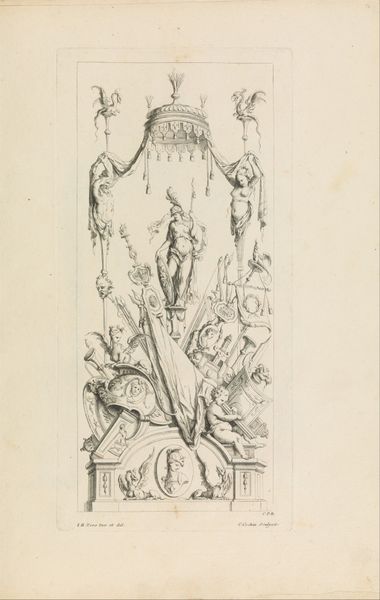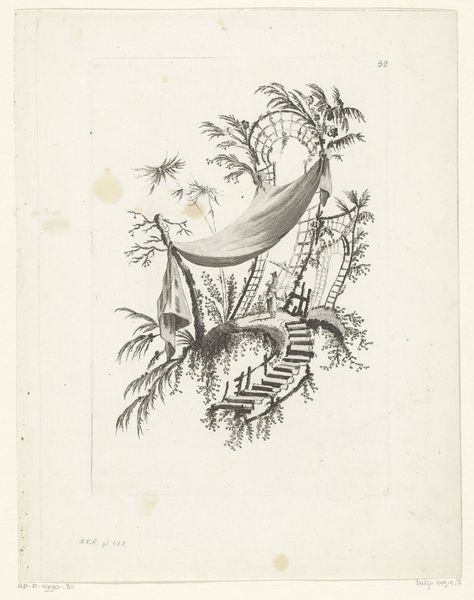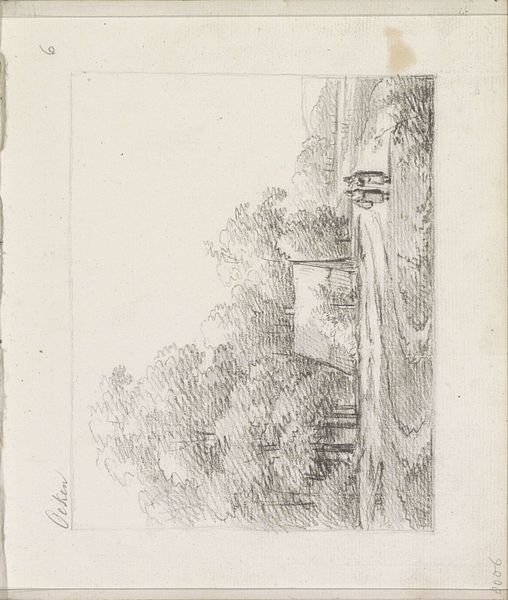
Dimensions: height 242 mm, width 162 mm
Copyright: Rijks Museum: Open Domain
Editor: We're looking at "Man spant tentdoek," or "Man Stretching a Canvas," an engraving from the late 1770s, currently held at the Rijksmuseum. There's an airy quality to this piece, even with all the meticulous detail. How would you interpret it, focusing on its compositional elements? Curator: Note the dynamic interplay between the geometric scaffolding and the organic forms of the foliage. The artist manipulates line weight and density to create a spatial recession. Observe how the curve of the canvas tent interacts with the implied lines of the structural supports. Editor: I hadn’t considered how deliberately those shapes work together. What about the lone figure; how does the engraver place that form within this overall scheme? Curator: Precisely! Consider the figure's placement—slightly off-center, almost integrated into the surrounding landscape. His active pose is in direct contrast with the relative stasis of the other formal elements; is the man a central focus, or does he serve more as a reference to scale? Note also how the linear design of the engraver reinforces the texture, tone and overall visual pattern. Editor: I see how the contrast affects the viewing experience now. The engraving truly comes alive when deconstructing it by focusing on composition and arrangement. Curator: Precisely. By analyzing such formal relationships we begin to truly appreciate the artist's calculated decisions in achieving a desired aesthetic effect. We also develop tools to assess other artworks too. Editor: Absolutely, thanks for drawing my attention to these sophisticated formal details. It provides a fascinating lens through which to better understand the engraving!
Comments
No comments
Be the first to comment and join the conversation on the ultimate creative platform.

